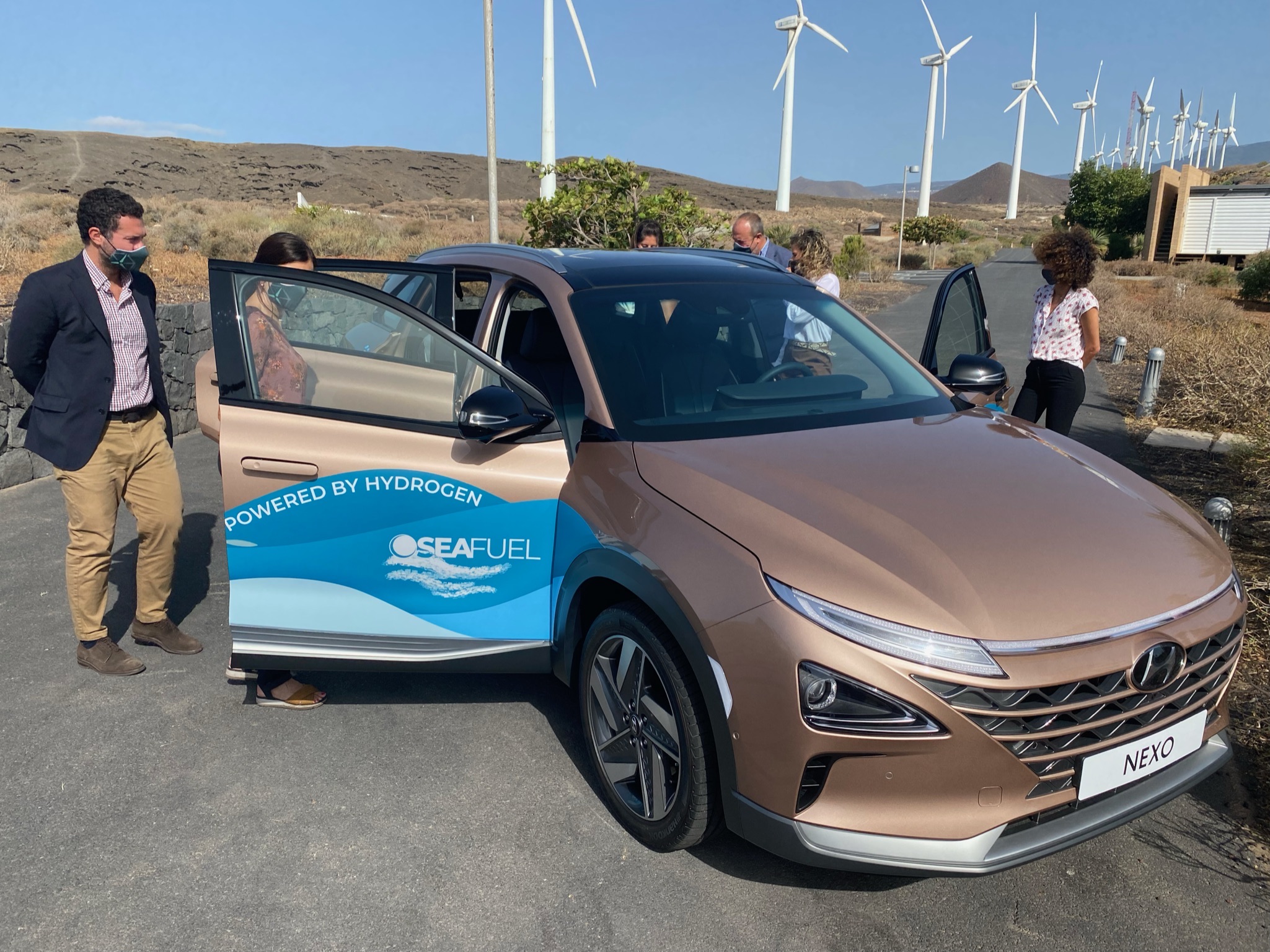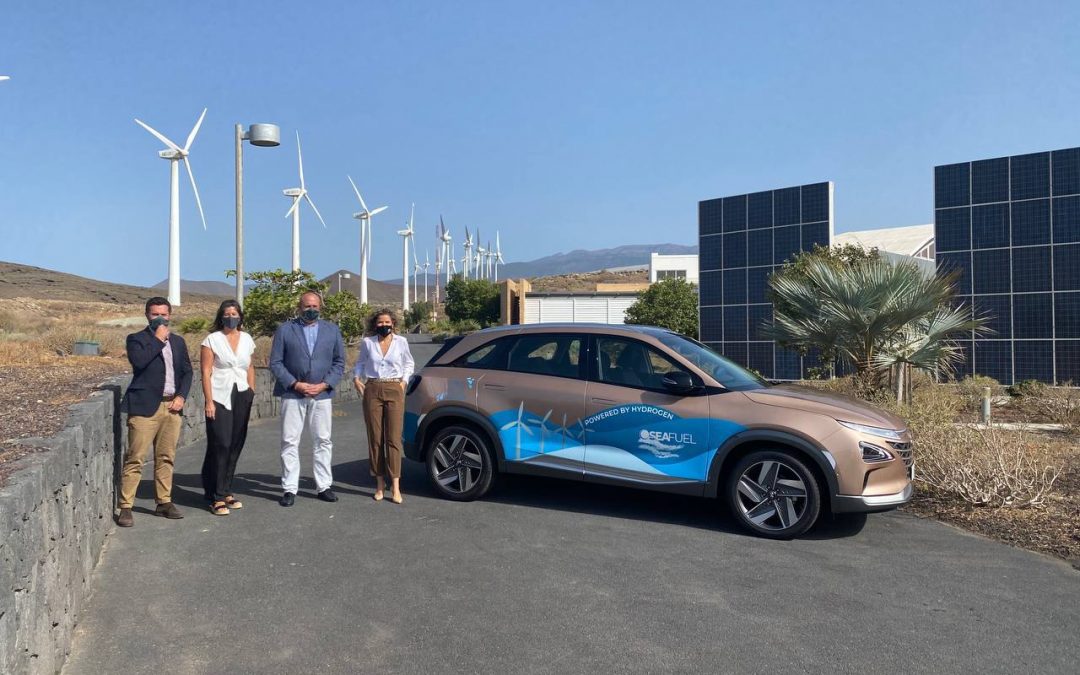The arrival of this vehicle in Tenerife is one of the main milestones of the project, will demonstrate the technological, social and economic viability of the implementation of renewable fuels in transportation.
The car that burns zero fossil fuels produces zero pollution, runs on the same chemical reaction that powers rockets, and gets twice as much distance as a Tesla.

The partners and associate partners in the Canary Islands of the European project SEAFUEL, the Institute of Technology and Renewable Energies (ITER), the Tenerife Energy Agency (AIET), the Cabildo de Tenerife and Hyundai Canarias, presented yesterday the first fuel cell vehicle of the SEAFUEL fleet. The Hyundai Nexo, the first to arrive, together with the other 7 SEAFUEL cars will demonstrate the viability of using sustainable hydrogen in transport by supporting the shift towards a low-carbon economy. The event, which took place at the ITER facilities, was attended by the first vice-president and director of the Island of Innovation, Enrique Arriaga, and the CEO of Hyundai Canarias, Irene Gálvez, as well as the CEO of ITER, Eduardo Ballesteros, and the project manager of the Tenerife Energy Agency, Elsa López.
This vehicle, which will be used by the project partners to carry out a study on the socio-economic impact of the implementation of this technology in isolated territories, will become part of the SEAFUEL fleet of vehicles that will be supplied in the pilot plant planned in the facilities of the Institute of Technology and of Renewable Energies in the Industrial Estate of Granadilla de Abona.
The First Vice-President and Innovation counselor, Enrique Arriaga, highlighted Tenerife’s representation in the SEAFUEL project with the participation of ITER and the Tenerife Energy Agency, highlighting “we expect the hydrogen plant to be operative this summer to begin with the ambitious sustainability studies using the whole SEAFUEL fleet, which will count with a total of 8 vehicles, such as the one presented today”.
The innovative approach of the SEAFUEL project foresees the installation of the first hydrogen fueling station in the island Tenerife, a pilot plant capable of producing green hydrogen from seawater and renewable energies.
According to Gálvez, Hyundai CEO, “we are very proud to participate in this project and are ready for the sustainability challenge. “This fuel cell vehicle has a range of 666 kilometers, it charges in five minutes, and only emits water vapor. We are sure it will be a success,” she stressed.
Hydrogen, obtained through the electrolysis of water powered by renewable energies, is one of the cleanest fuels on the planet. It is then used through a fuel cell, where hydrogen is mixed with air to generate electricity and water. This propulsion system moves electricity to an electric engine and water to the exhaust pipe, so this type of vehicle emits only water vapor into the atmosphere. To this advantage, is added the wide autonomy and a refueling that requires only 5 minutes in a procedure similar to that of gasoline or diesel.
Soon the pilot plant of the SEAFUEL project, the first hydrogen fueling station in the Canary Islands, will leave the United Kingdom a head towards Tenerife, which will supply the 8 hydrogen vehicles of the project. The SEAFUEL pilot plant will be located at ITER´s facilities, where it will demonstrate the technological, social and economic viability of the implementation of renewable fuels in transport.
“As part of the pilot plant to be installed in Tenerife, the Tenerife Energy Agency will develop a virtual tour so that anyone can visit the installation from anywhere in the world. The virtual tour will give a close up to the inside of this pilot plant and explain how it works.” reported or explained Elsa López from AIET during the event“.
The SEAFUEL project is co-funded by the INTERREG Atlantic Area Programme 2014-2020 and its partners include the National University of Ireland Galway and Comharchumann Fuinnimh Oileáin Árann Teoranta of Ireland; the United Kingdom, the University of Liverpool, Action Renewables, HyEnergy Consultancy Limited and Logan Energy; from Spain, the Instituto Tecnológico y de Energías Renovables and the Agencia Insular de Energía de Tenerife; and portugal, the Regional Energy Agency of Madeira.






Recent Comments